Description
The authors present the case of an 18-year-old girl with cystic fibrosis. Her genotype was F508/N1303K. She had sputum colonisation by Pseudomonas aeruginosa and Staphylococcus aureus and since 2006, she also had Burkholderia cepacia in sputum, which was typed as genomovar II (Burkholderia multivorans). Her lung function had remained stable but low over the last few years despite complex psychosocial problems and issues with treatment compliance. She deteriorated at the end of May 2010 and was admitted with right upper lobe cavitating pneumonia. After 6 weeks of aggressive antibiotic treatment and physiotherapy, she remained intermittently feverish, forced expiratory volume exhaled during the first second dropped from 43% to 22% of predicted value and inflammatory markers remained raised. Although consolidation had improved on chest x-ray, the bronchiectatic changes had worsened. CT of the chest showed dramatic deterioration in bronchiectasis throughout both lungs compared with CT 6 weeks earlier. Figures 1, 2 and 3 are from the first CT of the chest, while figures 4, 5 and 6 are from second scan. Despite aggressive and persistent antibiotic treatments alongside lung clearance therapies and nutritional support, the patient remains unwell and has not managed to regain her lung function.
Figure 1.
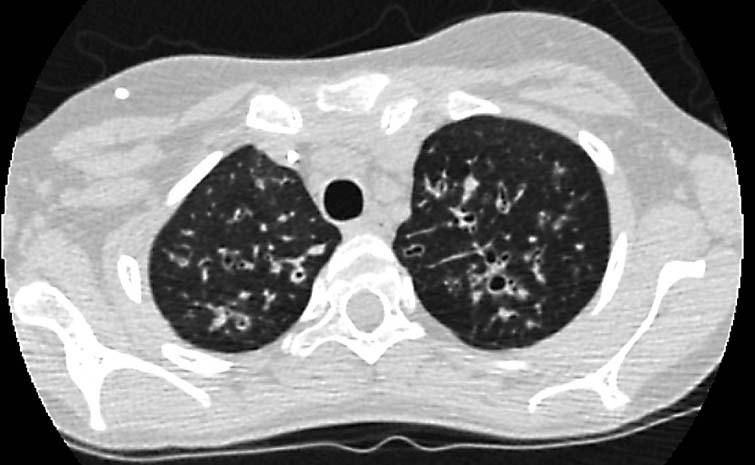
First CT of the chest showing bronchiectasis in both upper lobes.
Figure 2.
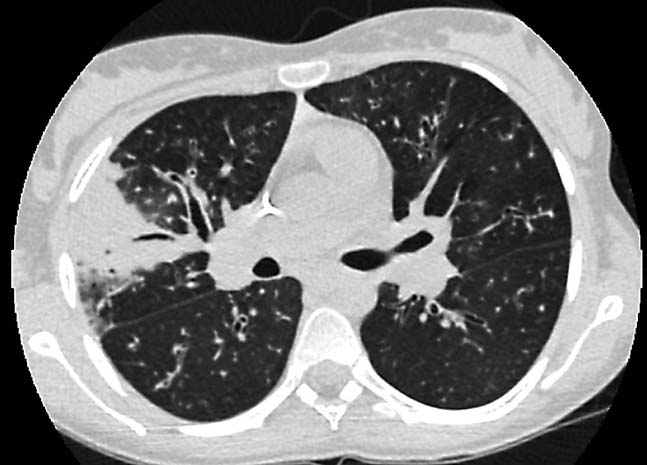
First CT of the chest showing bronchiectasis in mid zones bilaterally and consolidation on right side.
Figure 3.
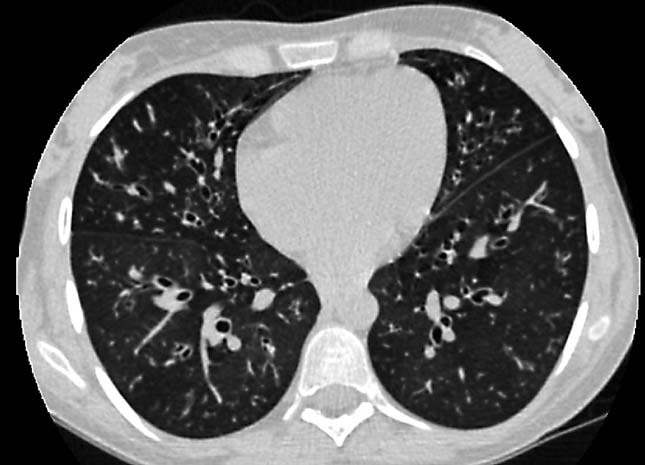
First CT of the chest showing bronchiectasis in both lower zones.
Figure 4.
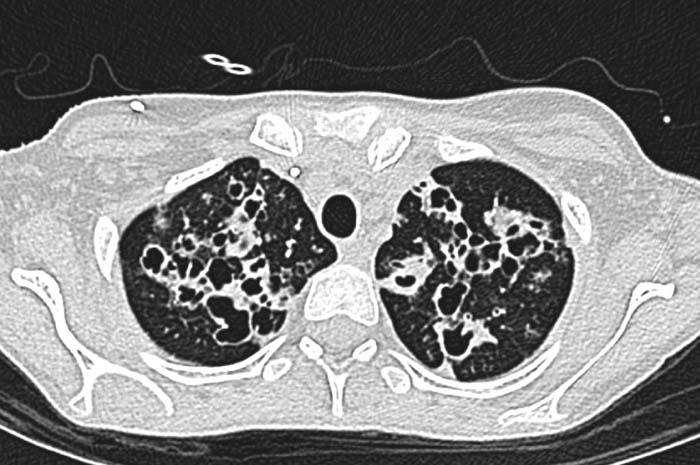
Second CT showing accelerated bronchiectasis in upper zones.
Figure 5.
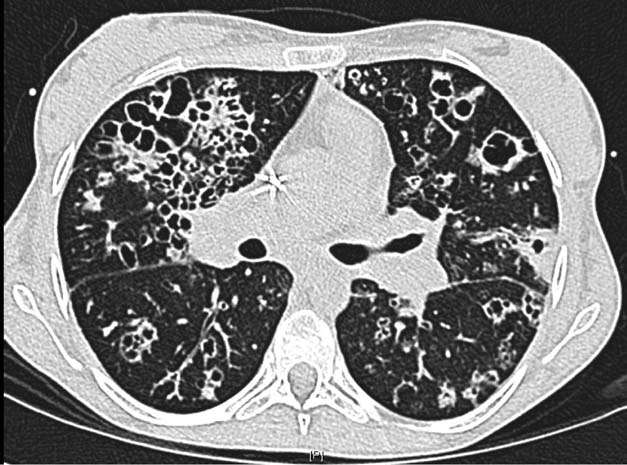
Second CT showing accelerated bronchiectasis in mid zones.
Figure 6.
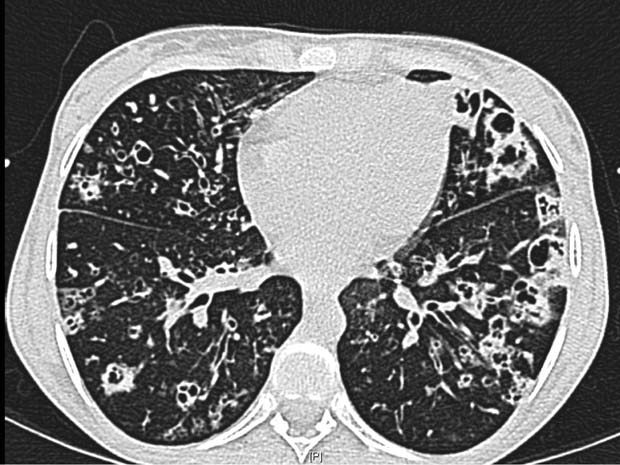
Second CT showing accelerated bronchiectasis in lower zones.
Discussion
Burkholderia cepacia complex (BCC) is a group of organisms closely related to pseudomonas species. More than 10 BCC genomovars are known to be pathogenic in cystic fibrosis. Genomovar III (B cenocepacia) is associated with accelerated decline in lung function. Other genomovars are thought to be less aggressive.
Cepacia syndrome is a rapid clinical deterioration in patients with new acquisition of or chronic colonisation with BCC and carries a very high mortality. In chronically colonised patients, the deterioration is often triggered by an intercurrent illness. It is commonly associated with BCC genomovar III (B cenocepacia) but can very rarely be associated with B multivorans. To our knowledge, so far there have only been three published cases of cepacia syndrome in association with B multivorans.1
Footnotes
Competing interests None.
Patient consent Obtained.
References
- 1.Jones AM, Dodd ME, Govan JR, et al. Burkholderia cenocepacia and Burkholderia multivorans: influence on survival in cystic fibrosis. Thorax 2004;59:948–51 [DOI] [PMC free article] [PubMed] [Google Scholar]


